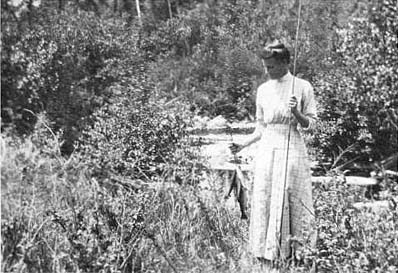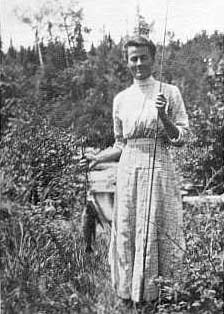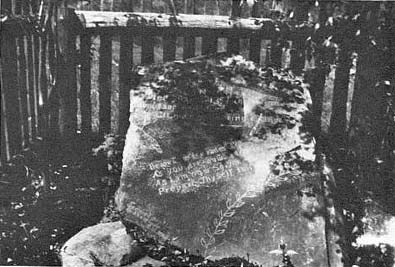
Bulletin 16, 1970
Home
Français
Introduction
History
Annual Index
Author &
Subject
Credits
Contact
Photographs
by Tom Thomson
by Dennis Reid, Curator of Post-Confederation Art
Pages 1
| 2 | 3 |
4
| 5 | 6
| 7 | 8
38 Miss Winifred Trainor, I

39 Miss Winifred Trainor, II

Winifred Trainor, eldest daughter of Hugh Trainor, a foreman
with the Huntsville Lumber Company, summered at Canoe Lake with her
family, and there met Tom Thompson, probably in 1913. (25) Thomson
developed a close relationship with the whole Trainor family,
sometimes staying in their small cabin on the west side of Canoe
Lake, just below Potter Creek. (26) By 1915, Thomson was visiting
someone - probably Winifred Trainor - in Huntsville. (27) And by the
time of his disappearance in July 1917, Huntsville was the only
place outside of Algonquin College it was felt necessary to check as
a part of the search. (28)
Since that time, a great many rumors have grown up around
Thomson's relationship with Winifred Trainor. When she met Miss
Trainor in Toronto after Thomson's death, Margaret Thomson reported
that the young lady "spoke as though she thought a great deal
of him." (29) If the Thomson family heard any reports of a more
serious relationship, they appear to have discounted them. (30) But
the rumour nevertheless persisted that Thomson and Miss Trainor were
in fact engaged to be married. (31) In later years, the special
place Miss Trainor had held in Thomson's affections was known by
people who were acquainted with her in Huntsville. (32) Most
recently, William Little, in his book on the death of Thomson, has
attempted to establish the fact of their engagement. (33) But he is
finally able to express only the opinion of Miss Trainor's nephew,
who believes that they were engaged. The nephew refers to
correspondence which gives "undisputable evidence that, Tom and
my aunt were engaged to be married." (34) Unfortunately, this
essential correspondence is not produced.
All questions aside as to the reciprocal nature of the
commitments involved, there can be no question but that Winifred
Trainor was very much in love with Tom Thomson. Writing in response
to a query some thirty-seven years after his death, the depth of her
feeling for the memory of Thomson was still eloquent : "I do
not know what to write - as Tom Thomson was the man that made me
happy then vanished. If I saw you I could say things that I will
never write - His friendship to me was as true as ever when he went
on to the great beyond - I still have his small pictures (gifts) -
and what I gave up for him I should have had some of his others -
but I was not treated fair, and bad nothing to do with his death-now
my time will soon be in too." (35)
40 The grave of James Watson

The inscription (36) reads, upper portion:
In memory of Jas. Watson, the first white person to be buried at
Canoe Lake. Died May 27, 1897, being one of about 500 employed at
this camp by the Gilmour Company, aged 21 years.
The centre portion, pointed at by the engraved hand to the left,
reads:
Remember, comrade, when passing by,
As you are now so once was I,
As l am now so you will be;
Prepare thyself to follow me.
Inscribed at bottom left is:
Engraved gratis by a comrade, W. C. McCain.
At the time Thomson took this photograph, this grave was one of
the two, enclosed by a rude picket fence, which made up the Canoe
Lake cemetery .The other grave belonged to an eight-year-old victim
of diphtheria, Alexander Hayhurst, who was buried in 1905. (37)
The afternoon of 17 July 1917, Thomson himself became the third
person to be buried in the Canoe Lake plot - about twenty-five feet
from the Watson marker.
Next Page | Notes
1
| 2 | 3 |
4
| 5 | 6
| 7 | 8
Annual Index | Author & Subject | Credits | Contact
This digital collection
was produced under contract to Canada's Digital Collections program,
Industry Canada.
"Digital
Collections Program, Copyright
© National Gallery of
Canada 2001"